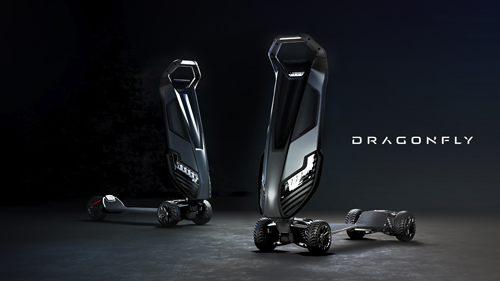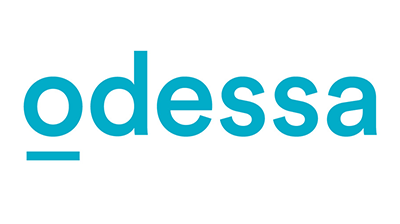
The company behind a radical new look for urban mobility is looking for new finance partners to deliver its vision for the future of transport.
D-Fly Group has developed the Dragonfly electric ‘hyperscooter’ that aims to introduce performance and luxury to the personal transport sector.
As cities increasingly look to ban or restrict cars to combat pollution, personal mobility solutions offer a potential multi-billion-dollar global market, but products have lacked investment in a quality experience, according to the D-Fly Group’s founder and chief executive officer Jeremy Williman.
He has spent two years developing the Dragonfly, working in partnership with renowned product design agency DCA.
The result is a three or four-wheeled luxury scooter, made with automotive grade materials including carbon fibre and featuring full suspension, built-in storage, sound system, a digital display, lights, indicators and alarm, that can reach speeds of 38mph and travel over 30 miles on a single charge.
It includes a unique ‘full-tilt’ steering mechanism, so a rider can change direction by tilting or twisting the controls, while it’s also foldable for easy transport and storage.

“The Dragonfly Hyperscooter is the urban-mobility equivalent to the supercar, and we’re very proud of that,” Williman (pictured) said.
The focus on luxury and high performance is reflected in the pricing, which starts at around $6,000, with most customers expected to own a Dragonfly outright, although up to one-third could opt for finance.
The company is currently looking for funding partners in its target markets of the UK, EU and US, for both online and point-of-sale finance, with predicted sales of up to 1,000 units in the first year.
However, there is massive long-term global potential. McKinsey analysis suggests the total size of the world’s micromobility market will be $500 billion by 2030, while the ownership element of the market could be worth $12 billion within five years.
Williman has a history of spotting innovative opportunities.
He is the former chief executive officer of Tensator, the world’s largest crowd control company, where he rolled out the Tensabarrier, a retractable barrier system that is now a familiar site in almost every venue, from airports to cinemas.
Development of the Dragonfly was inspired by Williman’s own experiences looking for personal transport to suit his needs.
“I drove lots of scooters and none of them ticked the right boxes for areas such as safety and practicality, so I decided to build my own,” he said.
“Currently, scooters just aren’t practical. If you pick something up, there is nowhere to put it and build quality is often poor, meaning a device only lasts a short time.
“Dragonfly is different. It is a luxury, performance product that has been fully developed with years of testing by industry experts.”
With launch imminent in 2020, a key challenge is legislation that isn’t keeping up with local authority ambitions to reduce emissions, as powered scooters face bans in many areas.
However, Williman argues ‘archaic’ legislation will change and within its target market there are wide-ranging potential uses on private land.
In addition, there are potential corporate uses at luxury venues, such as hotels, golf clubs and marinas.
Williman said: “This is very much a fledgling industry, but we have created a new premium product that will generate global demand and have some interesting future mobility applications.
“The Dragonfly hyperscooter is a game-changer, an iconic new vehicle that brings ‘automotive grade’ manufacturing, advanced materials, cutting-edge engineering and technology to the micromobility sector. It is better designed, more powerful, safer and has a more exhilarating ride than anything currently on the market.”

